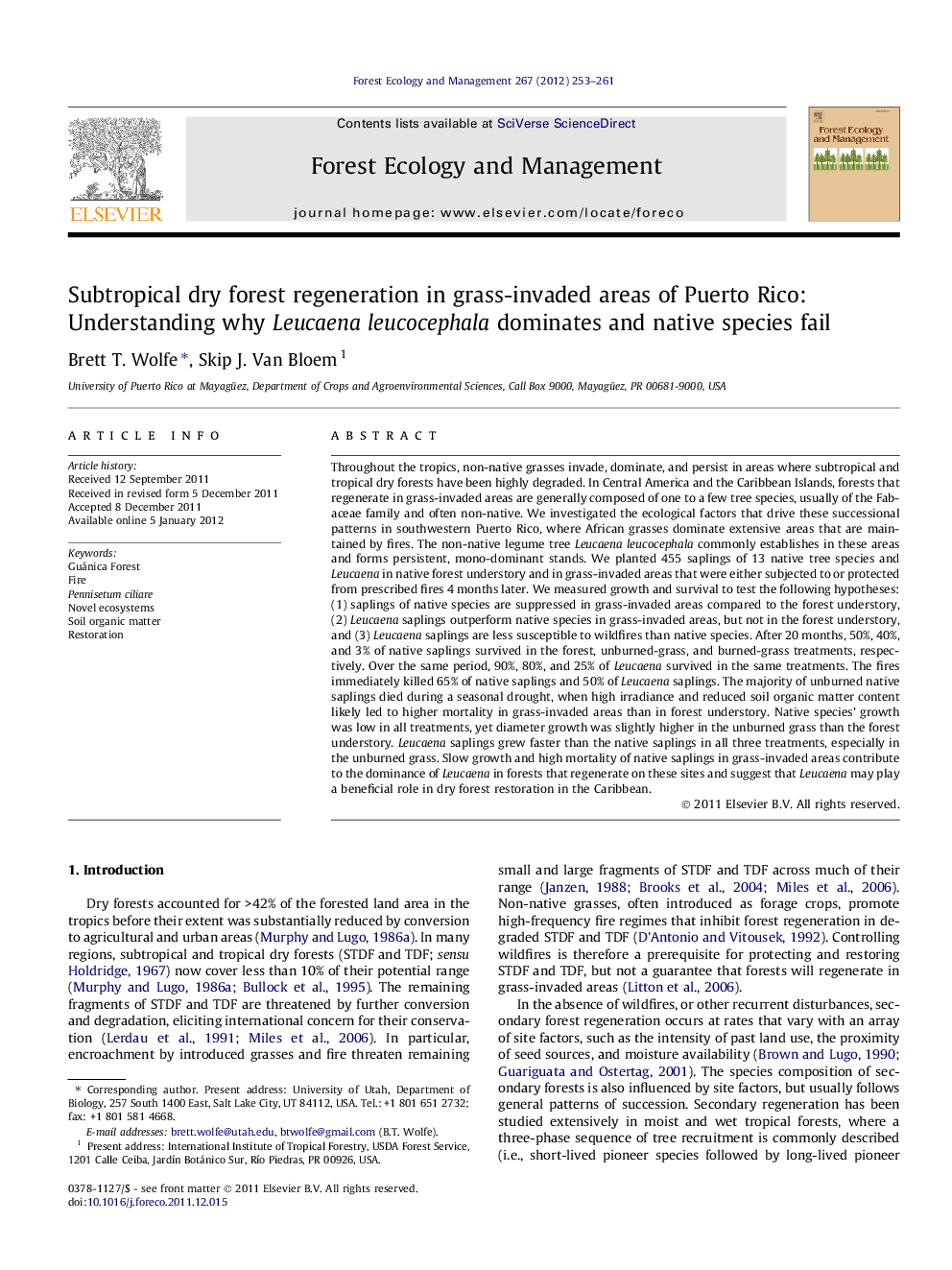| کد مقاله | کد نشریه | سال انتشار | مقاله انگلیسی | نسخه تمام متن |
|---|---|---|---|---|
| 87630 | 159258 | 2012 | 9 صفحه PDF | دانلود رایگان |

Throughout the tropics, non-native grasses invade, dominate, and persist in areas where subtropical and tropical dry forests have been highly degraded. In Central America and the Caribbean Islands, forests that regenerate in grass-invaded areas are generally composed of one to a few tree species, usually of the Fabaceae family and often non-native. We investigated the ecological factors that drive these successional patterns in southwestern Puerto Rico, where African grasses dominate extensive areas that are maintained by fires. The non-native legume tree Leucaena leucocephala commonly establishes in these areas and forms persistent, mono-dominant stands. We planted 455 saplings of 13 native tree species and Leucaena in native forest understory and in grass-invaded areas that were either subjected to or protected from prescribed fires 4 months later. We measured growth and survival to test the following hypotheses: (1) saplings of native species are suppressed in grass-invaded areas compared to the forest understory, (2) Leucaena saplings outperform native species in grass-invaded areas, but not in the forest understory, and (3) Leucaena saplings are less susceptible to wildfires than native species. After 20 months, 50%, 40%, and 3% of native saplings survived in the forest, unburned-grass, and burned-grass treatments, respectively. Over the same period, 90%, 80%, and 25% of Leucaena survived in the same treatments. The fires immediately killed 65% of native saplings and 50% of Leucaena saplings. The majority of unburned native saplings died during a seasonal drought, when high irradiance and reduced soil organic matter content likely led to higher mortality in grass-invaded areas than in forest understory. Native species’ growth was low in all treatments, yet diameter growth was slightly higher in the unburned grass than the forest understory. Leucaena saplings grew faster than the native saplings in all three treatments, especially in the unburned grass. Slow growth and high mortality of native saplings in grass-invaded areas contribute to the dominance of Leucaena in forests that regenerate on these sites and suggest that Leucaena may play a beneficial role in dry forest restoration in the Caribbean.
► Performance of native and Leucaena saplings in subtropical dry forest habitats.
► Drought and fire caused high mortality of native species in grass-invaded areas.
► Unburned natives grew slightly faster in grass-invaded areas than forest understory.
► Leucaena outperformed native saplings, especially in unburned grass-invaded areas.
Journal: Forest Ecology and Management - Volume 267, 1 March 2012, Pages 253–261